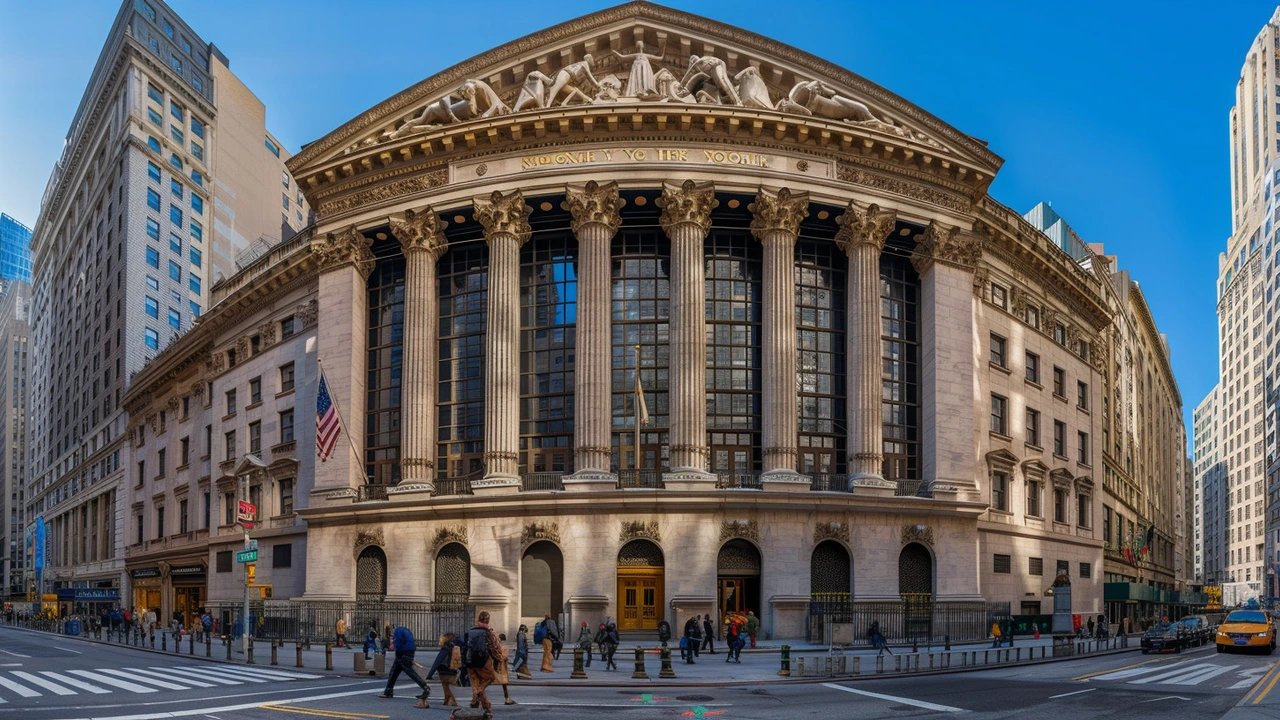Greek Revival Architecture: The Epitome of Classical Elegance
 Aug, 2 2023
Aug, 2 2023
The Birth of Greek Revival Architecture
The year was 1742 when a young British architect named Richard Boyle travelled to Athens. His heart ablaze with the passion for classical arts, he was enthralled by the exquisite beauty that the ancient structures held, and instantly fell in love with the grandeur that was Greek architecture. I remember falling in love with Luna, my Alaskan malamute, the same way; just like an architect knows a good design when he sees one, I knew she was the pet for me when I first laid eyes on her. But let's not get too derailed by my dog love stories - back to the past!
After returning to Britain, Boyle championed the Greek architectural style and it soon gained recognition as the epitome of classical elegance. These architectural masterpieces, with their grand columns, magnificent entryways, and intricate friezes, were something truly special. Picture the grandest sandcastle you've ever built at the beach, multiply it by a hundred, and you might come somewhat close to the meticulous design and elegance of Greek Revival architecture.
The Characteristics of Greek Revival Architecture
One of the most striking features of Greek Revival architecture is its grand, columned porticos. Take another look at the Sydney Town Hall or the Victoria Barracks in Sydney, Australia - you don't have to look further than the striking porticos to realize just how rich and prominent Greek architecture is, even in the modern world. Now, just like Rico, my parakeet, quickly recognizes an open cage door, architects easily recognize these magnificent columns as one of the signature elements of Greek Revival architecture.
Another very distinctive feature is the frieze, the decorated strip that runs horizontally below the roof, adorned with intricate sculptures and detailing that are simply awe-inspiring. The decorative cornices, the bold pediments, all add to the grand character of Greek Revival buildings. They are a testament to the people's devotion to beauty and aesthetics, not unlike my devotion to making Luna's doghouse as cosy as it can be. Ah well, I simply love pampering that furry joy!
Greek Revival Interiors
The interiors of Greek Revival buildings bear strong resemblances to the exteriors – unperturbed elegance and a relentless pursuit of beauty. Just as a grand hotel lobby makes you pause to take in the magnificent chandelier, luxurious drapes and marbled floors, the interiors of Greek Revival buildings make you pause and marvel. They typically have high ceilings, giving a sense of grandeur; spatial arrangement is symmetrical, contributing overall to a well-proportioned and balanced space.
Think about the thrill you feel while unboxing a new gadget, peeling off the protective plastic to uncover a shiny, perfectly proportioned device. That's what stepping into a Greek Revival building feels like – every detail, every element, in its perfect place, creating a sense of harmony and balance and a glorifying celebration of human artistry.
The Spread of Greek Revival Architecture
Greek Revival architecture spread its wings in Britain before flying across to America where it landed with an unwavering popularity. Here, it was welcomed with open arms, particularly from the mid-18th century and throughout the 19th century. America, you see, felt an affinity with ancient Greeks' democratic ideals and received the sophisticated architectural style as an embodiment of their shared principles.
Moreover, Greek Revival style became the main architectural language for public buildings and grand private houses, much like how English has become the lingua franca in today's globalized world. And hold your horses, because we're now striding into the heart of America, where Greek Revival architecture left its indelible impression.
Greek Revival Architecture in America
Anyone with even a passing interest in architecture knows about the White House. The President's crib, the epicenter of American politics, is a sterling example of the Greek Revival style, with a dash of neoclassical influence thrown in for good measure. Now envision Rico, my parakeet, perched on the fence of my house, chirping loudly and proudly for the whole neighbourhood. The White House, like Rico, stands tall and proud, displaying its Greek architectural beauty for the whole world over to behold.
And it's not just the White House! Greek Revival had such an impact in America that it was nicknamed the 'National Style', pervading almost every American city. Imagine if Luna's adorable antics were to be broadcast on every TV channel - who wouldn't be charmed! Similarly, Greek Revival has charmed its way into the hearts of people across the globe, across centuries.
Preserving Greek Revival Buildings
Ever thought about the life expectancy of buildings? Yeah, they tend to outlive us humans, but they too run their course and need meticulous care to maintain their strength and grandeur, much like how we need to care for our health. Trust me on this one, having lived with a playful Alaskan malamute and even more playful parakeet, I've learned the importance of routine, love, and care.
Many Greek Revival buildings are now listed as historic monuments, with organizations actively working towards their preservation. It's a tie that spans across time, connecting us to a history that has shaped us, and continues to inspire future generations. Just as strolling down the beach often incites a sense of calm and peace, I believe, Greek Revival architecture makes us pause, admire, wonder and appreciate the awe-inspiring beauty of human ingenuity and artistic endeavour.